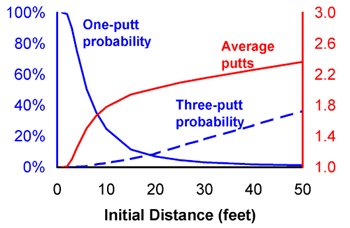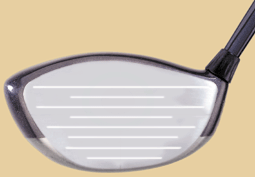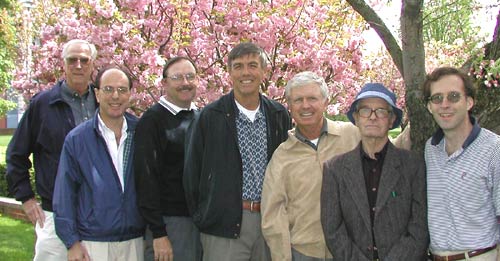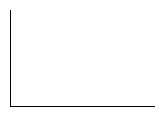| |
 |
Return
to main research page |
Conferences
and seminars |
|
| |
| Are the Official World Golf Rankings Biased? |
Click
here for pdf file |
| Abstract: Golf is a global sport with professional golfers playing on many organized tours throughout the world. The largest and most important tours for male professionals include the PGA Tour, European Tour, Japanese Tour and Asian Tour. The Official World Golf Ranking, or OWGR, is a system for ranking male professional golfers on a single scale. We say a ranking system is unbiased if otherwise identical golfers who happen to play on different tours have the same (or very similar) ranks. In this paper, we investigate whether the OWGR system is biased for or against any of the tours, and if so, by how much. To investigate any potential bias, we compare the OWGR system with two unbiased methods for estimating golfer skill and performance. The first is a score-based skill estimation (SBSE) method, which uses scoring data to estimate golfer skill, taking into account the relative difficulty of the course in each tournament round. The second is the Sagarin method, which uses win-lose-tie and scoring differential results for golfers playing in the same tournaments, to rank golfers. Neither the score-based skill method nor the Sagarin method use tour information in calculating player ranks, and therefore neither method is biased for or against any tour. Using data from 2002 to 2010 and comparing the results ranks from the OWGR and score-based methods, we find that PGA Tour golfers are penalized by an average of 26 to 37 OWGR ranking positions compared to non-PGA Tour golfers. Qualitatively similar results are found when comparing OWGR and Sagarin ranks. In all cases, the bias is large and statistically significant.
We find a persistent bias through time and also find that the bias tends to be the largest for golfers with SBSE ranks between 40 and 120. |
|
| |
| Putts Gained: Measuring Putting on the PGA TOUR |
Click
here for pdf file |
| Abstract: Who was the best putter on the PGA TOUR last year? Does taking 32 putts necessarily
represent a poor putting round for a PGA TOUR pro? Current putting stats don’t provide
convincing answers to these questions. This note gives a brief introduction to putts
gained, a better way to measure putting skill and rank putters on the PGA TOUR. |
|
| |
|
Assessing
Golfer Performance on the PGA TOUR,
Interfaces,
2012, Vol. 42, No. 2, pp. 146-116. |
|
| Abstract:
The game of golf involves many different types of shots: long tee shots
(typically hit with a driver), approach shots to greens, shots from the sand,
putts on the green, and others. While it is easy to determine the winner
in a golf tournament by counting strokes, it is not easy to assess which factors most contributed to the victory. In this paper we apply an analysis based on strokes gained (previously termed shot value) to assess the performance of golfers in different parts of the game of golf. Strokes gained is a simple and intuitive measure of the contribution of each shot to a golfer's score. Strokes gained analysis is applied to extensive ShotLink data in order to rank PGA TOUR golfers in various skill categories and to quantify the factors that differentiate golfers on the PGA TOUR. Long game shots (those starting over 100 yards from the hole) explain about two-thirds of the variability in scores among golfers on the PGA TOUR. Tiger Woods is ranked number one in total strokes gained and he is ranked at or near the top of PGA TOUR golfers in each of the three main categories: long game, short game and putting. His dominance is a result of excelling at all phases of the game, but his long game accounts for about two-thirds of his scoring advantage relative to the field. A similar approach is used to rank PGA TOUR courses in terms of overall difficulty and difficulty in each part of the game. A preliminary analysis shows that the USGA's recent change in the groove rule for irons has had almost no impact on scores from the rough. |
|
| |
| Assessing
Golfer Performance Using Golfmetrics |
 |
Abstract:
The software application Golfmetrics was created to capture and store golfer
shot data and to quantify differences in shot patterns between players of
different skill levels. Across golfers it is shown, somewhat surprisingly,
that longer hitters tend to be straighter than shorter hitters. Individual
golfers can be measured relative to a benchmark to assess relative accuracy
and to suggest whether to focus on increasing distance or decreasing directional
errors. For amateur golfers, distance errors on short game and sand shots
are shown to be about three times larger than direction errors. Shot value
is a quantitative measure of the quality of each shot in comparison to a
scratch golfer. Shot value analysis is a useful way to measure consistency,
assess a golfer's relative strengths and weaknesses, and to indicate where
practice and improvement are most needed. For amateur golfers a significant
contributor to high scores is inconsistency, i.e., a relatively small number
of awful shots. This research also quantifies the contributions of each
part of the golf game (putting, short game, sand game or long game) to overall
scores for golfers of different abilities. The long game is found to be
the biggest factor in the difference in scores between pros and amateurs
and between low- and high-handicap amateurs. |
Chapter
34: Science
and Golf V: Proceedings of the 2008 World Scientific Congress of Golf
Click
here for pdf file |

|
| Media mentions |
| |
| EdTech magazine: Rise in Analytics Attracts Students to Sports Business, by Wylie Wong, April 30, 2012 |
| |
| GolfWorld magazine: An Outside the Box Proposal, by Mike Stachura, April 30, 2012 |
| |
| Wall
Street Journal: Why Scientists Love to Study Golf, by John Paul Newport, March 23, 2012 |
| |
| ESPN: Driving, not putting, key for Tiger, by Farrell Evans, March 28, 2012 |
| What turns the tables for victory, by Farrell Evans, January 4, 2012 |
| |
| Golf magazine: Where It All Went Wrong: A groundbreaking new statistic reveals which parts of Tiger's game cost him the most shots during his winless 2010 season (April 2011, p.120) |
| No.1 Instruction Myth: You Putt for Dough, by Connell Barrett, September 4, 2010 (October issue) |
| How to grade your ball-striking this weekend, by Connell Barrett, August 20, 2010 |
| Grade your ball-striking, part 2!, by Connell Barrett, August 26, 2010 |
| |
| Slate: The Return of the King: The stats show that Tiger Woods is getting his game back, by Michael Agger, April 6, 2011 |
| Bad Lies: Why most golf statistics whiff and how to fix them, by Michael Agger, August 12, 2010 |
| |
| New
York Times: The
Long and Short of Which Shots Need Help, by Bill Pennington, July 21,
2008 |
| Avoiding One Mistake After Another, by Bill Pennington, July 22,
2010 |
| |
| Golf magazine: 2009 Survey of the American Golfer, by Connell Barrett, November 23, 2009 |
| Tiger,Angelina and the biggest secret in golf: why you're better off with Tiger's driving than putting, by Connell Barrett, October 18, 2009 |
| |
| Slate: Moneygolf: What Can Stat Geeks Tell Us About What it Takes to Win on the Links?, by Michael Agger, June 18, 2009 |
| |
| Wall
Street Journal: Tiger's
Grand Slam Dream: Don't Bet On It, by Tim Marchman, March 3, 2009 |
| |
| Why
shots fall short: See
the March
2003 issue of Golf Digest.
|
| |
| Where's
the Hot Spot? |
 |
|
Where
should the ball be hit on this driver's clubface so that the ball
travels the maximum distance? In other words, where is the club's
hot spot? Which model drivers are the most forgiving? Mark
Broadie, Lou Riccio, and Frank
Thomas estimated statistical models using a large dataset of shots
hit by a golf machine to answer these and other related questions.
Their research formed the basis for the Where's
Your Hot Spot? articles featured in the December
2003 and October
2001 issues of Golf Digest
magazine. |
|
 |
| Golf links |
| Professor Richard Rendleman's golf research |
Dr. Sasho MacKenzie's golf research |
|
| Wei Under Par: golf blog |
Geoff Shackelford: golf blog |
|
| Journal of Applied Golf Research (JAGR) |
Journal of Quantitative Analysis in Sports (JQAS) |
John Hellstrom |
| Golf BioDynamics |
FranklyGolf |
Aimpoint |
| FiveIronFitness |
Back9Fitness |
Sonic Golf |
| Luke Donald videos |
Wildcatgolfacademy videos |
World Scientific Congress of Golf |
 |
 |
May
2003 meeting of the USGA Handicap Research
Team. From left to right: Richard Stroud, Lou Riccio, Kevin O'Connor, Frank
Engle, Warren Simmons, Fran Scheid, Mark Broadie. |
| |
|
|







